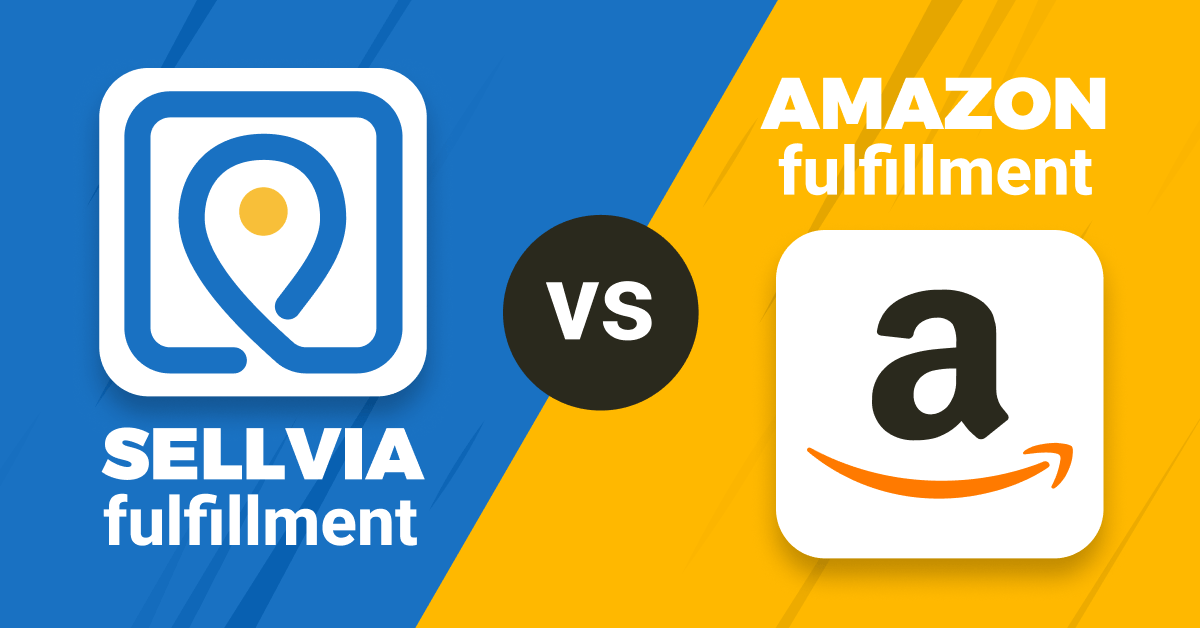In evaluating the capabilities of Product Sourcing and Supplier Integration for dropshipping to the U.S. market, you'll have to evaluate the capabilities of each platform in terms of reliability of suppliers speed, speed, ease of integration, and overall suitability to serve U.S.-based customers. This is a summary of the options to look at in Amazon Sellers, Shopify or WordPress for your dropshipping requirements.
1. Amazon Seller
Fulfilled by Amazon (FBA) as opposed to. Merchant Fulfilled. Amazon's FBA offers warehousing services, faster shipping and help meet customer expectations. But, FBA requires purchasing inventory upfront, so it doesn't exactly match a traditional dropshipping model.
Amazon's Policy on Dropshipping: Amazon's policy for dropshipping requires you to identify yourself, as the primary seller. Third-party providers must provide reliable service and quality to avoid account cancellation due to order problems or negative feedback. Be sure that any supplier you select is in compliance with Amazon's strict packaging and shipping guidelines.
Amazon's Supplier Flexibility is Limiting There are fewer integrations that allow dropshipping providers to integrate with Amazon than they do on Shopify, WordPress or other platforms. If you're droppingshipping on Amazon you'll have to search for and find Amazon-compatible providers that comply with strict delivery standards or choose private label FBA options to speed up delivery.
Assessment Steps for Amazon Sellers:
Evaluate Supplier reliability: Check whether the supplier can meet on Amazon's expectation of fast shipping (often in 2 or 3 days for Prime customers).
Verify that Amazon is in compliance with its policy on packaging, labeling and returns.
Communication with suppliers: It's important to have a clear and reliable communication, because you'll need respond to any issues that arise. To avoid interruptions If you're using FBA choose suppliers that maintain a consistent level of quality and stocks.
2. Shopify
Shopify has a wide range of integration tools for dropshipping companies, such as Oberlo. Spocket. DSers. and Modalyst. This makes it easier to sync products with suppliers. There are many applications that provide U.S. based suppliers the option to reduce shipping costs.
U.S. Supplier Access: Software such as Spocket and Printful are specialized in sourcing suppliers from U.S. suppliers.
Automated Synchronization: Shopify apps automatically transfer inventory, prices and product information from the suppliers. This minimizes the chance of out-of stock products or pricing blunders. Automated fulfilment options can decrease manual work, and keep order statuses updated.
Product Variety and Niche Choice: Determine if integrations allow users to use a variety of products that align to your specific niche. This can be beneficial to customer satisfaction as well as brand consistency.
Steps to Assess Shopify
U.S.-Based Suppliers Availability: Examine which suppliers have U.S. warehouses or offer quick shipping options to the U.S. market. For U.S. sources, Spocket/Printful is the most suitable solution.
Product Quality and Reviews Read reviews and If possible, test the items. Feedback from customers is vital to ensure a positive experience for buyers. Supplier reliability can be variable.
Supplier Response and Customer Support Examine the supplier's response time, particularly when issues arise. Suppliers who offer consistent customer service will improve customer satisfaction and help resolve problems faster.
3. WordPress (WooCommerce)
Flexible Sourcing with Plugins: WooCommerce on WordPress allows considerable flexibility in the sourcing process, with plugins like AliDropship, Spocket, and WooDropship that can sync suppliers' products directly to your store.
U.S.-Based Supplier Options Similar to Shopify, WooCommerce integrates with U.S.-based suppliers through Spocket, Printful, and other providers, making it ideal for fast delivery in the U.S. market.
Product Customization and Private Label Options: WooCommerce may also integrate with private label and custom print providers like Printful, which allows for product branding and customization--helpful for establishing a unique brand identity.
Manual Fulfillment Option: While WooCommerce supports automated fulfillment via various plugins, this option gives you more manual control over the process of placing orders. This makes it much easier to diagnose and modify orders in the event that you need to. It's a compromise because it takes more setup and management in comparison to Shopify's plug-and-play integration.
WooCommerce Assessment Steps:
Compatibility Review and Ratings Review the supplier plugins and ensure they're compatible with WooCommerce and have a positive rating. Check that products, stock and prices are automatically synchronized. This is crucial to ensure that large orders are properly managed.
Quality Control of Suppliers: Examine the reputation and credibility of potential suppliers. Find suppliers that provide excellent service to customers and consistency in product quality and availability.
WooCommerce allows for product customization and a variety of pricing options. This is a great feature when you often need to alter markups on your products in response to market trends, supplier costs and other elements. Read the recommended Sellvia for website info including online business for sale, ecommerce solution, build an ecommerce site, good items to dropship, sell online website, software e commerce, web business for sale, create an online store, make an online store, opening e commerce business and more.

How Can You Measure The Effectiveness Of Customer Feedback And Support
Assessing Customer Feedback and Support for dropshipping platforms like Amazon Seller, Shopify, and WordPress (WooCommerce) is crucial to ensure a positive experience for both sellers as well as customers. Each platform offers a variety of support and feedback methods that can be significant in determining customer satisfaction. Here are some methods to compare the three platforms.
1. Amazon Seller
Customer Feedback Mechanisms for Customer Feedback
Review and Ratings on Products: Amazon allows customers to write reviews and rate products with a 1-to-5-star scale. This feedback has a huge impact on the seller's credibility and can influence sales. Ratings that are high in quality increase visibility and credibility.
Seller Feedback: Buyers are able to leave feedback specifically for sellers, which can impact the overall rating of the seller and performance metrics. Negative feedback can result in account suspension or even lower visibility.
Q&A section: Customers may ask about products and sellers (and other customers) can respond. This section is an excellent way to build trust and clear up information on the product.
Customer Support Features
Amazon Customer Service: Amazon provides a robust customer service system. Amazon provides all customer support issues related to FBA including returns, refunds and inquiries. Sellers who handle orders are the ones who have to provide support for customers.
Return Policy Amazon offers a user-friendly return policy that is simple to follow with easy procedures for returning products. This improves trust among consumers, but it may be a bit complex for sellers.
Seller Support: Amazon offers dedicated seller assistance, with tools available through Seller Central to resolve issues relating to account health metrics and disputes with sellers.
Assessment Steps for Amazon Sellers:
Review Seller Metrics. Examine feedback from your customers and your own seller ratings to find areas of improvement. When you begin to build your credibility, you should aim to achieve the highest ratings.
Check Customer Reviews. Check reviews and questions regularly to address any issues raised by customers promptly and ensure the quality of your product.
Amazon Resources: Discover the features available in Amazon Seller Central that can aid you, including notification of performance as well as resolution options.
2. Shopify
Customer Feedback:
Shopify Store Reviews: Sellers are able to integrate apps which allow their customers to leave reviews directly on the page of the product (e.g. Judge.me, Yotpo). Feedback from customers could play an important role in driving sales and enhancing confidence.
Social Proof: Shopify uses social proof in many of its stores, whether that's via testimonials or social media content generated by users. This can help to increase credibility and entice potential customers.
Shopify merchants have implemented post-purchase surveys to collect data about the customer's satisfaction and experience. These data will be used to improve their services.
Customer Support Features
Shopify provides 24/7 Support via live chat, phone and email. Shopify makes sure that customers can be assisted whenever they encounter issues which is essential to run dropshipping businesses.
Shopify Help Center - A extensive resource center that includes articles, tutorials, community forums and guidance on topics ranging from setting up a store to strategies for marketing.
Shopify has a range of apps to help with customer service (e.g. Zendesk or Gorgias). These apps assist manage tickets, streamline customer enquiries and boost communication.
Methods of Assessment for Shopify
How can customers be encouraged to leave feedback after completing the purchase.
Test Support Channels - Contact Shopify Customer support to determine response times as well as the level of assistance you receive.
Help Center Resources: Get familiar with the Shopify Help Center so you can efficiently troubleshoot problems.
3. WordPress (WooCommerce),
Customer Feedback:
WooCommerce has a built-in review feature for products that lets customers to give ratings and provide feedback. Sellers can moderate reviews to ensure that they are of a high quality and appropriate.
Feedback Plugins - A lot of WooCommerce stores use plugins to enhance reviews systems (e.g. Yothirith WooCommerce Advanced Reviews), or feedback forms that allow customers to provide detailed feedback.
Social Media Integration Social Media Integration WooCommerce stores will encourage customers to post reviews on social networks that they can then share on their pages for products in order to increase the credibility of their store.
Customer Support Features
WooCommerce is heavily dependent on community forums and documentation to provide support. WooCommerce Help Docs can provide extensive assistance, but they may not be available in the same time as Shopify.
Hosting Support WooCommerce merchants often use managed hosting services which provide customer assistance. Support quality can vary greatly among hosting providers.
Support Systems that can be customized: WooCommerce supports integration with products for customer support, such as Zendesk.
WooCommerce Assessment:
Review Functions: Make sure that review functions for products have been activated. Also, evaluate any additional plugins for review to enhance the feedback mechanism.
Test Hosting Support: If using managed hosting, contact support to determine the level of responsiveness and the quality of support provided.
Establish a Support System If you're looking to increase the effectiveness of managing customer queries, consider using a helpdesk. Check out the top Sellvia review for more info including ecommerce platform, best thing to sale online, sellvia login, ecommerce platform, sellvia login, build an ecommerce site, start online business, e commerce brands, dropshipping products, best online storefront and more.
